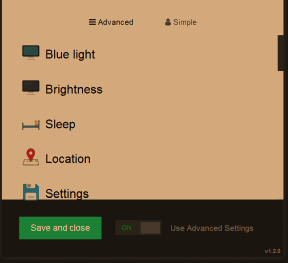Eyestrain? Seriously, Try Iris Now.
Lately we’ve been hearing a lot about the dangers from the light from our screens. In fact, it’s not just eyestrain. It’s problems with sleep (a major migraine trigger), and general health issues that researchers are only beginning to understand.

Recently I’ve gotten to know a great computer app that helps cut down on some of the typical problems with monitors. Now you’ve probably heard of some of these. For example, f.lux is excellent, and free. It can match sunrise and sunset in your area to give your screen a more natural look. It’s been around forever.
There’s also Redshift, another free one, which is open source.
Iris has both paid and free options. The main program is paid (lifetime or subscription, but not expensive!), but you can try it for free for seven days. And I encourage you to give it a try right now.
Here’s how Iris is different. First, it has a gazillion options in the pro version. Really, this thing can do a lot of tricks.
But here’s the biggest thing – it can significantly cut down on flicker as it dims your screen. This is a huge plus for migraine and headache sufferers.
Give it a try and see if it makes a difference. Try the main version first, with the free trial (you don’t need to enter credit card information – yay!). You can use a very basic version absolutely free (Iris Mini). But the main version isn’t expensive.
I’ve been doing some study on health and light and would like to write more later. But seriously, for anyone who does significant work on the computer, this is a big one. I started using f.lux years ago, and that already made a significant difference. And I’m using Iris right now.
There are a lot of things you can do to improve your health when it comes to natural and artificial light. Even with the paid version of Iris, it’s one of the cheapest options out there to try. Check out the official Iris website, and you can read more about the science and technology behind the software.
